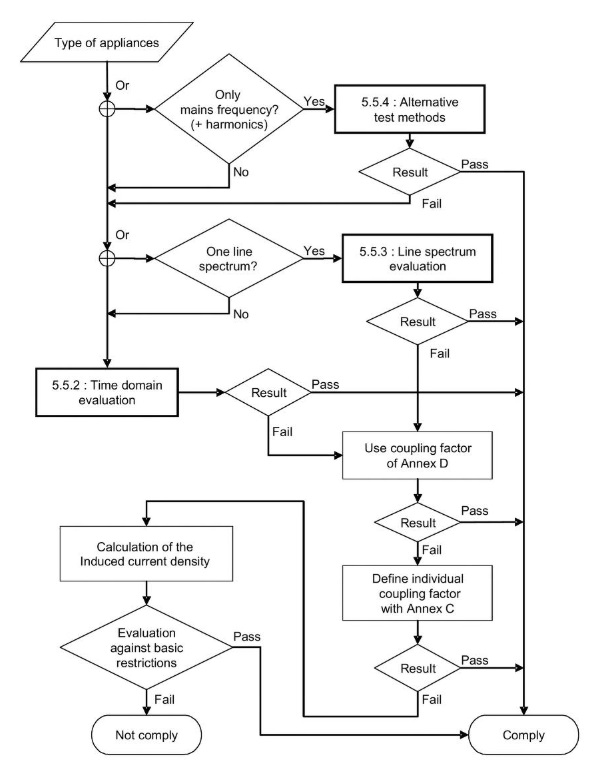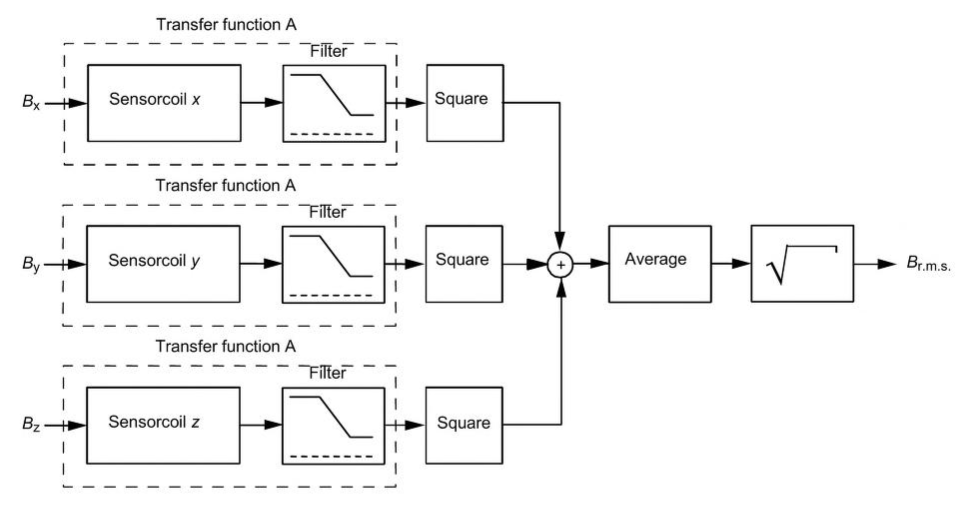
IEC
IEC 62233: Electromagnetic Fields of Household Appliances and Similar Apparatus with Regard to Human
Standard Overview
IEC 62233 describes measurement methods for determining electric field strength and magnetic flux density for household and other electrical appliances. The standard covers electromagnetic fields from 0 to 300 GHz. Along with test methods, IEC 62233 describes ideal testing conditions as well as recommended measuring distances and positioning. Methods specified in this standard are valid over a frequency range of 10 Hz to 400 kHz; frequencies below 10 Hz and above 400 kHz are regarded as complaint without testing, unless called out in IEC 60335.
IEC 62233:2005 is the latest version of the standard.

EN 62233 is the European standard for household appliances and is nearly identical to IEC 62233. The few differences between the two standards can be found in the exposure limit values listed in Annex B of both standards. EN 62233 limit values are identical to ICNIRP limit values, whereas its IEC counterpart offers both IEEE and ICNIRP values.
_20.png)
Time Domain Evaluation Test Procedure Sequence
The measurement sequence is portrayed in the figure below:

Line Spectrum Evaluation Test Procedure Sequence
Buy IEC 62233 PDF
IEC 62233:2005 is the latest version of the standard.

Applies To:
- Household Electrical Appliances
- Electric Tools
- Electric Toys
- Heavy Industrial Apparatus
- Vehicle-Specific Apparatus
- Cables, Fuses, Switches, Circuit Breakers
- Medical Appliances
- Personal Computers
- TV, Radio, Audio, Video Equipment
- Electronic Musical Instruments
- Radio Transmitters
EN 62233 is the European standard for household appliances and is nearly identical to IEC 62233. The few differences between the two standards can be found in the exposure limit values listed in Annex B of both standards. EN 62233 limit values are identical to ICNIRP limit values, whereas its IEC counterpart offers both IEEE and ICNIRP values.
Choosing a Test Method
When testing to IEC 62233, choosing the correct test method is essential to ensure your setup is right for the appliance being tested. Your device may require a time domain evaluation, a line spectrum evaluation or alternative test methods depending on its specifications. The following diagram will help you to choose how you test:_20.png)
Time Domain Evaluation
Regardless of the signal type, testers can perform time domain measurements of the value of the magnetic flux density. A transfer function "a" can be implemented to take into account the dependency on the frequency of the reference levels for fields with multiple frequency components.Time Domain Evaluation Test Procedure Sequence
- Perform measurements on each individual coil signal.
- Apply weighting to each signal via the transfer function.
- Square weighted signals.
- Add squared signals.
- Average the sum.
- Get the square root of the average.
The measurement sequence is portrayed in the figure below:

Line Spectrum Evaluation
The line spectrum test method should be chosen in cases in which there is only a line spectrum, i.e. magnetic fields with a fundamental frequency of 50 Hz and some harmonics.Line Spectrum Evaluation Test Procedure Sequence
- Perform measurements on each individual coil signal.
- Integrate the signals for a value directly proportional to B(t)
- Perform a discrete Fourier transform for each coil
- Determine the local maxima
- Perform a vector addition
Alternative Test Methods
Appliances constructed so they can only produce magnetic fields at mains frequency and their harmonics only need to be tested in the frequency range below 2 kHz. Depending on the reference levels, in these instances, simplified alternative test methods can be applied.Buy IEC 62233 PDF
Products Used in Testing

Narda ELT-400 Exposure Level Tester | 1 Hz - 400 kHz
- Direct evaluation of field exposure in comparison to major standards
- Automatic exposure evaluation for various waveforms
- Eliminates the overestimation occurring occasionally with FFT-based evaluation


Wavecontrol WPF40 Field Probe, 20 MHz – 40 GHz
- High dynamic range of 60 dB
- Isotropic and RMS measurement
- Excellent attenuation at 50/60 Hz
